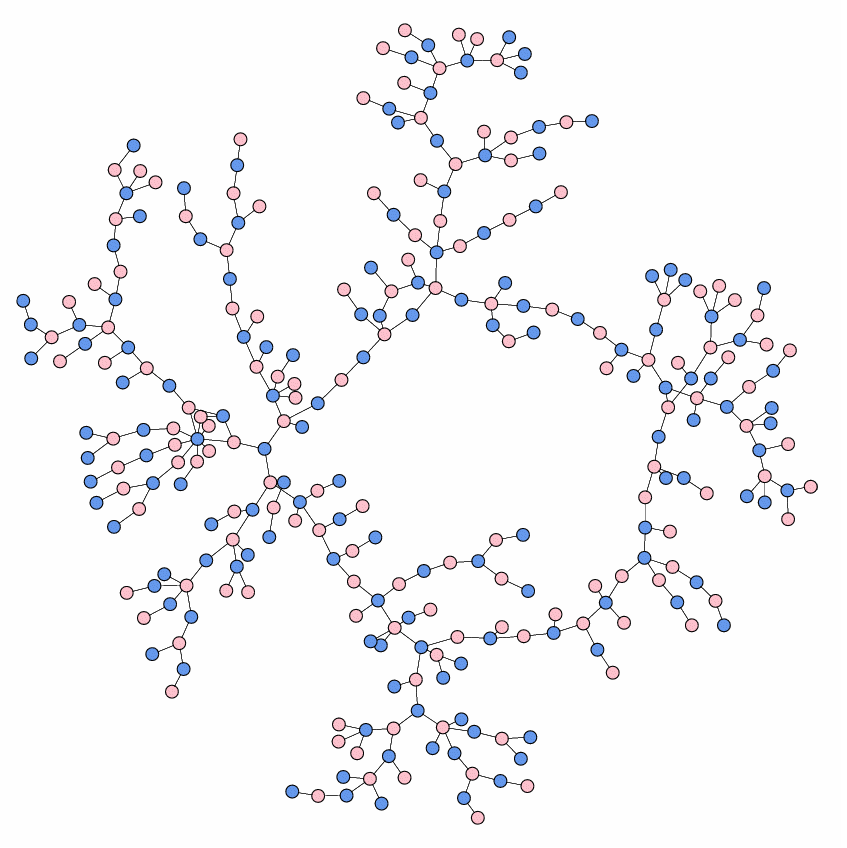|
|
Online Social Networks and Media |
|
Home |
Project Topics You can download the list of project topics here. Let us know of the topic you pick, and email or
set up a meeing to discuss the details. If you have
your own project proposal please contact us with your suggestion. The timeline for the projects is as follows:
Assignment 4 The assignment is due on Wednesday 19/12 in class. You
should do the assignment individually.
The goal of the assignment is to understand the HITS algorithm and the
propagation in networks. You should do the following exercises from the
textbook: ·
Exercise
6 from Chapter 14. ·
Exercise
4 from Chapter 19. ·
Exercise
2 from Chapter 21. Assignment 3 The assignment is due on Wednesday 28/11 in class. You
should do the assignment individually.
It has two parts a.
The
goal of the first part is to understand better the betweeness
computation. You should do Questions 10.2.1 -- 10.2.3 from Chapter 10 of
textbook Mining Massive Datasets. You should hand in your answers on paper at
the beginning of class. There will be no presentation, but we may sample
randomly a few people to present their solutions. b.
The
goal of the second part is to understand the proof that decentralized greedy
search is efficient for small world networks when the probability of
long-range links is selected appropriately. You will consider the case that
the underlying structure is a grid, and each node on the grid has a long
range link. The endopoint of the link is selected
with probability inversely proportional to the square of the distance from
starting point of the link. Prove that in this case the expected number of
steps of a path found between two nodes s,t by the greedy algorithm is O(log2n). Assignment 2 The
assignment is due on Wednesday 14/11 in class. You can do the assignment in
groups of up to 2 people. The goal of the assignment is to implement and
experiment with different network models. Choose
either a preferential attachment or a small world model to implement. You
should do your own implementation,
and not use some existing one online. For the
preferential attachment model you can choose between the Barabasi-Albert
model and the Copying model. The two models are described in the survey of
Mark Newman ·
M. E. J. Newman, The structure and function
of complex networks, SIAM
Reviews, 45(2): 167-256, 2003 You can
also follow references from the review to the original papers where the two
models are described. For the
small-world model, you can choose one of the two models proposed by Duncan
Watts. The first one is described in the paper: ·
D.J.
Watts. Networks,
Dynamics and Small-World Phenomenon, American Journal of Sociology, Vol.
105, Number 2, 493-527, 1999 The second
one (proposed in collaboration with S. H. Strogatz)
is described in the paper ·
Watts,
D. J. and S. H. Strogatz. Collective dynamics of 'small-world' networks. Nature 393:440-42, 1998 It is also
described in the review by Mark Newman. Implement
the model that you choose and experiment with different values for the
parameters of the model. Generate graphs with at least 5K nodes. For each
graph, compute the clustering coefficient, the degree distribution, and
produce a visualization of the network. You can use Gephi
for these tasks. For the scale free models compute also the exponent of the
distribution. You should
prepare a short presentation (4-5 slides) for the above. The presentation
should include a 1-page description of the model and the choices that you
made. Assignment 1 The
assignment is due on Friday 26/10 in class. You can do the assignment in
groups of up to 3 people. The goal of the assignment is to apply the
techniques we described in class for observing and computing power-laws. Choose a
graph dataset (you can find a list of such datasets at the Resources page).
The graph should have at least 1000 nodes. 1.
Compute
the degree distribution and produce the following plots:
i.
The
degree distribution in log-log scale
ii.
The
degree distribution in log-log scale using exponential binning
iii.
The
cumulative degree distribution in log-log scale
iv.
The
Zipf plot of the degree distribution 2.
Compute
the exponent of the power-law distribution and in the plots i-iii plot also
the expected value if the values were drawn from the distribution. You can
read more about the different methods of plotting the distribution and
estimating the power-law exponent at:
You should
prepare a short presentation (3-4 slides) for the above. The presentation
should include a description of the dataset. |
